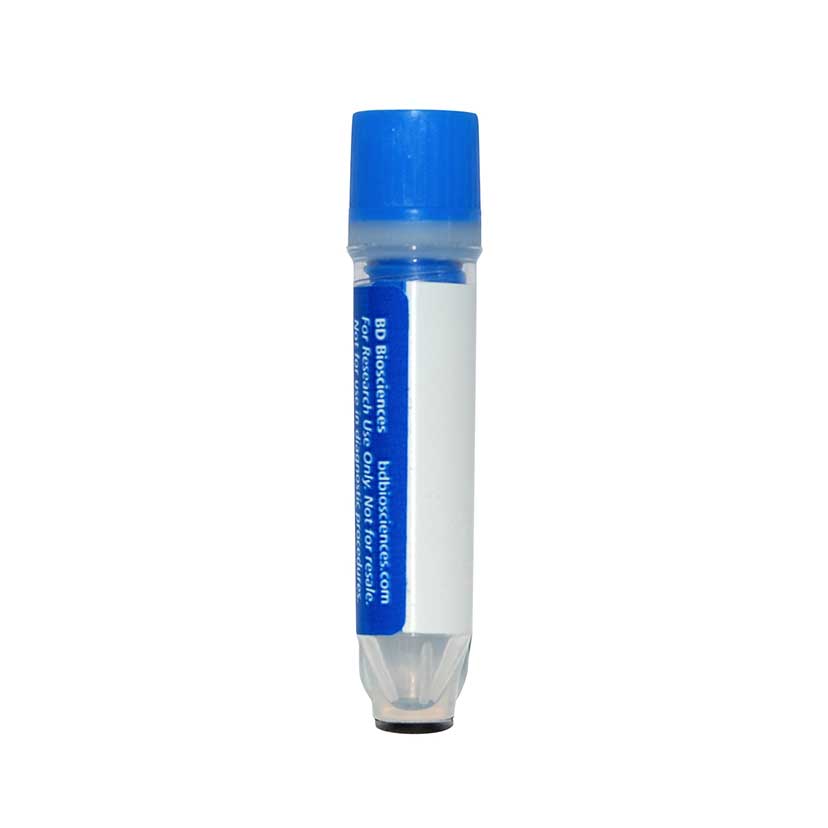-
Your selected location is
Middle East / Africa
- Change location/language
-
Reagents
- Flow Cytometry Reagents
-
Western Blotting and Molecular Reagents
- Immunoassay Reagents
-
Single-Cell Multiomics Reagents
- BD® OMICS-Guard Sample Preservation Buffer
- BD® AbSeq Assay
- BD® Single-Cell Multiplexing Kit
- BD Rhapsody™ ATAC-Seq Assays
- BD Rhapsody™ Whole Transcriptome Analysis (WTA) Amplification Kit
- BD Rhapsody™ TCR/BCR Next Multiomic Assays
- BD Rhapsody™ Targeted mRNA Kits
- BD Rhapsody™ Accessory Kits
- BD® OMICS-One Protein Panels
- BD OMICS-One™ WTA Next Assay
-
Functional Assays
-
Microscopy and Imaging Reagents
-
Cell Preparation and Separation Reagents
Old Browser
This page has been recently translated and is available in French now.
Looks like you're visiting us from {countryName}.
Would you like to stay on the current location site or be switched to your location?
BD™ AbSeq Oligo Mouse Anti-Human CD101
Clone V7.1 (RUO)


Regulatory Status Legend
Any use of products other than the permitted use without the express written authorization of Becton, Dickinson and Company is strictly prohibited.
Preparation And Storage
Recommended Assay Procedures
Put all BD® AbSeq Reagents to be pooled into a Latch Rack for 500 µL Tubes (Thermo Fisher Scientific Cat. No. 4900). Arrange the tubes so that they can be easily uncapped and re-capped with an 8-Channel Screw Cap Tube Capper (Thermo Fisher Scientific Cat. No. 4105MAT) and the reagents aliquoted with a multi-channel pipette.
BD® AbSeq tubes should be centrifuged for ≥ 30 seconds at 400 × g to ensure removal of any content in the cap/tube threads prior to the first opening.
Product Notices
- This reagent has been pre-diluted for use at the recommended volume per test. Typical use is 2 µl for 1 × 10^6 cells in a 200-µl staining reaction.
- Source of all serum proteins is from USDA inspected abattoirs located in the United States.
- Caution: Sodium azide yields highly toxic hydrazoic acid under acidic conditions. Dilute azide compounds in running water before discarding to avoid accumulation of potentially explosive deposits in plumbing.
- The production process underwent stringent testing and validation to assure that it generates a high-quality conjugate with consistent performance and specific binding activity. However, verification testing has not been performed on all conjugate lots.
- Illumina is a trademark of Illumina, Inc.
- Please refer to http://regdocs.bd.com to access safety data sheets (SDS).
- Please refer to bd.com/genomics-resources for technical protocols.
- For U.S. patents that may apply, see bd.com/patents.
Companion Products






The V7.1 monoclonal antibody specifically recognizes CD101 which is also known as P126 or Glu-Trp-Ile EWI motif-containing protein 101 (EWI-101). CD101 is encoded by IGSF2 (Immunoglobulin superfamily member 2) and belongs to the EWI (sharing a conserved glutamine-tryptophan-isoleucine motif) family within the Ig superfamily. CD101 is a ~135-140 kDa type I transmembrane glycoprotein that has a short cytoplasmic domain with potential phosphorylation sites and an extracellular region with seven immunoglobulin-variable (IgV)-like domains. CD101 is expressed as homodimers by granulocytes, monocytes, dendritic cells, and some T cells. Its expression by T cells may be upregulated upon activation through the CD3 complex. CD101 may play a role in TCR/CD3-dependent T-cell activation.
Development References (4)
-
Boumsell L, Hall KT, Freeman GJ, Benussan A. CD101 Workshop Panel report. In: Kishimoto T. Tadamitsu Kishimoto .. et al., ed. Leucocyte typing VI : white cell differentiation antigens : proceedings of the sixth international workshop and conference held in Kobe, Japan, 10-14 November 1996. New York: Garland Pub.; 1997:1033-1034.
-
Rivas A, Ruegg CL, Zeitung J, et al. V7, a novel leukocyte surface protein that participates in T cell activation. I. Tissue distribution and functional studies.. J Immunol. 1995; 154(9):4423-33. (Immunogen). View Reference
-
Ruegg CL, Rivas A, Madani ND, Zeitung J, Laus R, Engleman EG. V7, a novel leukocyte surface protein that participates in T cell activation. II. Molecular cloning and characterization of the V7 gene.. J Immunol. 1995; 154(9):4434-43. (Clone-specific: Immunofluorescence, Immunoprecipitation, Radioimmunoassay). View Reference
-
Soares LR, Rivas A, Ruegg C, Engleman EG. Differential response of CD4+ V7+ and CD4+ V7- T cells to T cell receptor-dependent signals: CD4+ V7+ T cells are co-stimulation independent and anti-V7 antibody blocks the induction of anergy by bacterial superantigen.. Eur J Immunol. 1997; 27(6):1413-21. (Clone-specific: Inhibition). View Reference
Please refer to Support Documents for Quality Certificates
Global - Refer to manufacturer's instructions for use and related User Manuals and Technical data sheets before using this products as described
Comparisons, where applicable, are made against older BD Technology, manual methods or are general performance claims. Comparisons are not made against non-BD technologies, unless otherwise noted.
For Research Use Only. Not for use in diagnostic or therapeutic procedures.